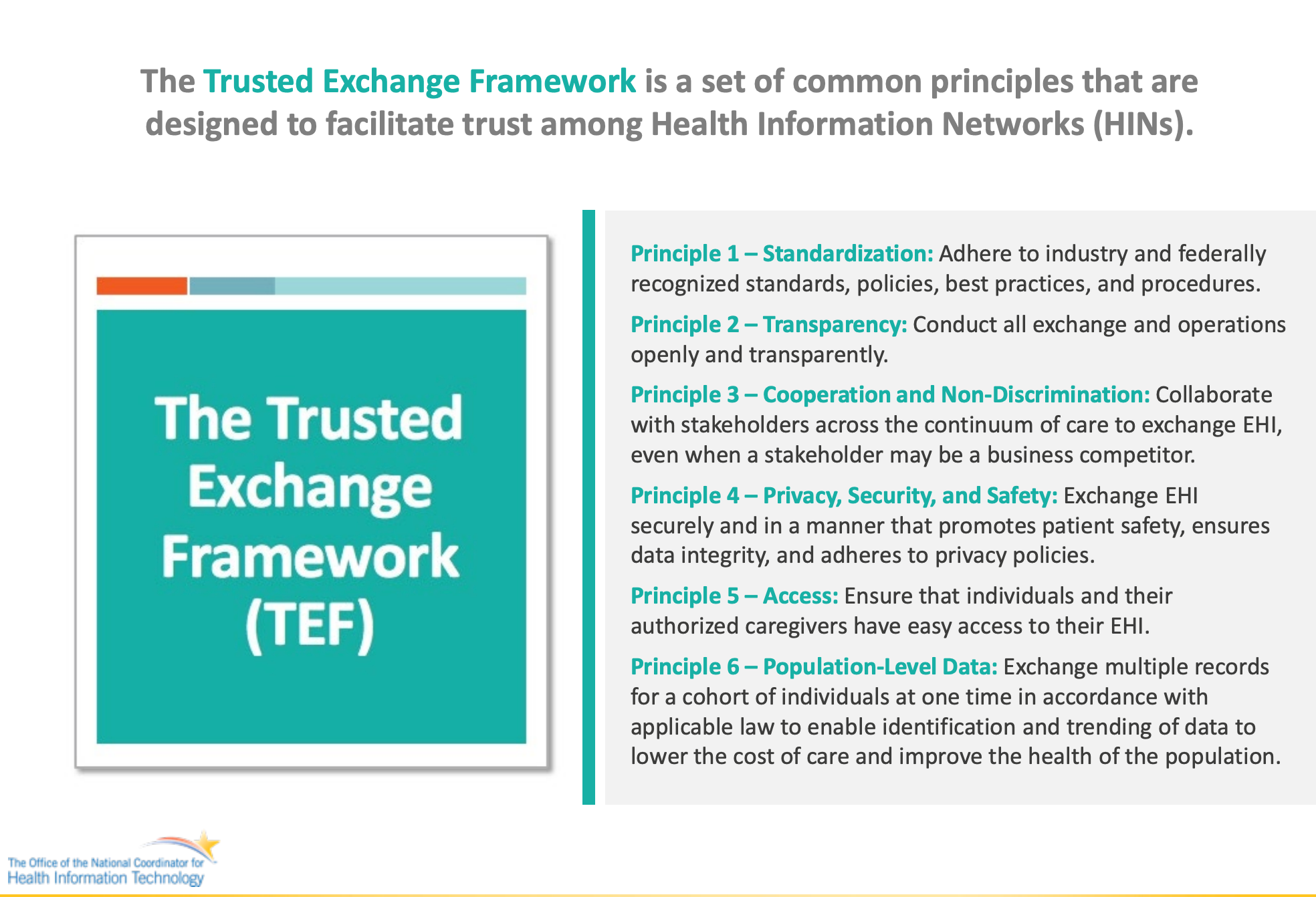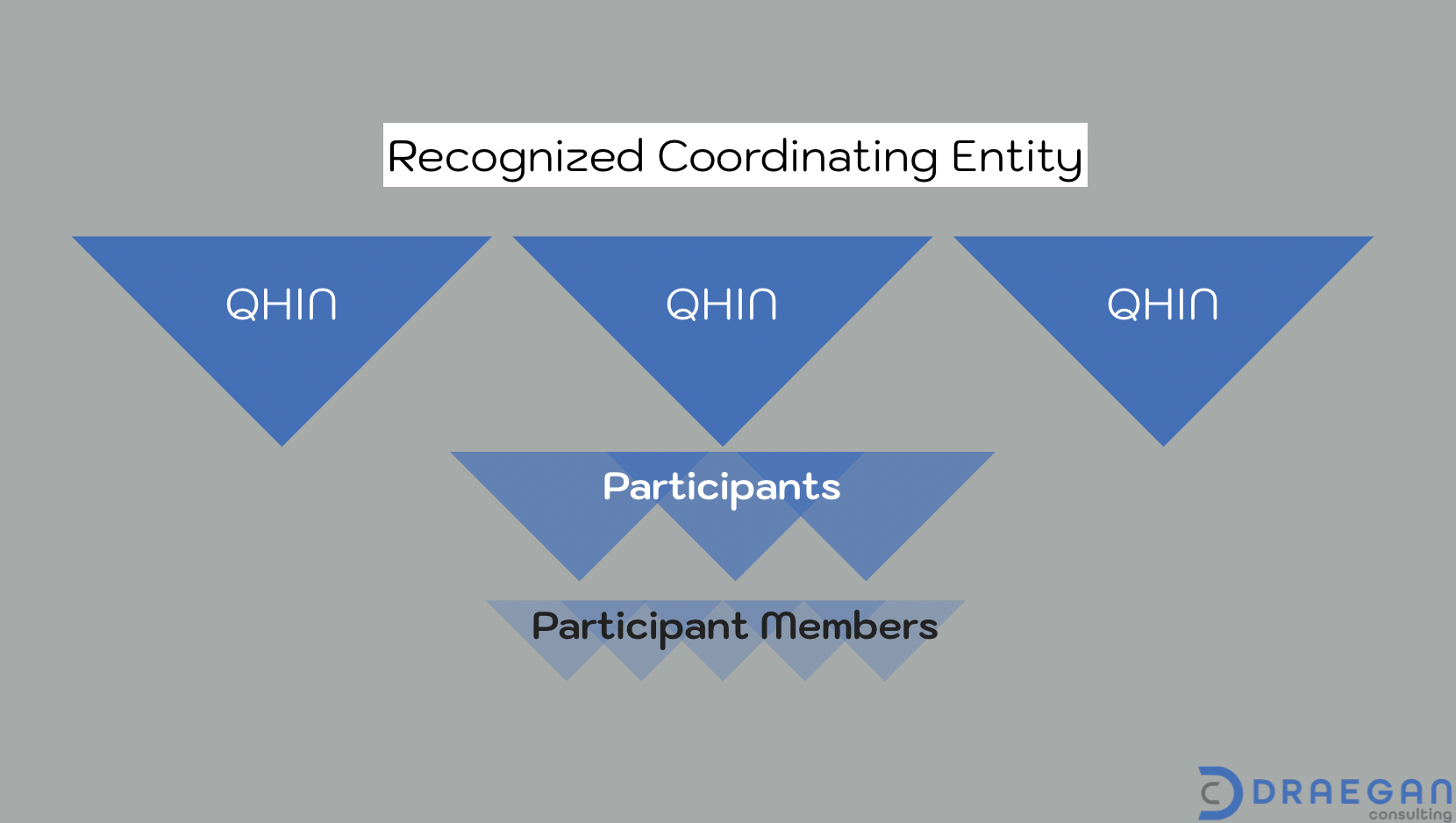What is the Trusted Exchange Framework and Common Agreement (TEFCA)?
ONC is working to develop a framework and corresponding agreement to improve electronic health information interoperability. What does it look like and will it work?

It seems like the number of acronyms in US Healthcare Technology keeps growing. It can be hard to keep track of what everything means ….. let alone how it relates. In this post, I’d like to provide a high-level overview of the Trusted Exchange Network and Common Agreement. Otherwise knows as ‘TEFCA’ or the ‘TEF Common Agreement’. (Note: TEFCA is still in draft form but there is anticipation that it will be final sometime in 2020.)
Section 4003(b) of the 21st Century Cures Act directed the ONC to develop or support a trusted exchange framework.
“[T]he National Coordinator shall convene appropriate public and private stakeholders to develop or support a trusted exchange framework for trust policies and practices and for a common agreement for exchange between health information networks. The common agreement may include— (I) a common method for authenticating trusted health information network participants; (II) a common set of rules for trusted exchange; (III) organizational and operational policies to enable the exchange of health information among networks, including minimum conditions for such exchange to occur; and (IV) a process for filing and adjudicating noncompliance with the terms of the common agreement. [T]he National Coordinator shall publish on its public Internet website, and in the Federal register, the trusted exchange framework and common agreement developed or supported under paragraph B…”
The Trusted Exchange Framework and Common Agreement were draft in response to this 21st Century Cures Act direction. (TEF Draft 2)
Trusted Exchange Framework (TEF)
The Office of the National Coordinator (ONC) for Health Information Technology designed the Trusted Exchange Framework (TEF) with a focus on three main goals:
1. “Provide a single “on-ramp” to nationwide connectivity.”
2. “Electronic Health Information (EHI) securely follows you when and where it is needed.”
3. “Support nationwide scalability.”
The plan is to develop a framework that reduces the need for so many electronic exchange methods for stakeholder groups.
TEF Principles

Common Agreement
The Common Agreement that accompanies the TEF has three main sections.
1) Minimum Required Terms and Conditions (MRTCs) - These will be the base terms that Qualified Health Information Networks (QHINs) will abide by. ONC will develop the MRTCs.
2) Additional Required Terms and Conditions (ARTCs) - These focus on requirements for the operational maintenance of the agreement. A Recognized Coordinating Entity (RCE) will develop the ARTCs. Review and approval will be the responsibility of ONC.
3) QHIN Technical Framework (QTF) - The technical and functional requirements for EHI exchange between the QHINs. The RCE and ONC will work with stakeholders to update and maintain the QTF.
TEFCA Overview
Many groups within the healthcare industry would use the Trusted Exchange Framework. These include, but are not limited to: government agencies, public health entities, providers, payers, tech developers, and individuals.
The RCE and each QHIN would enter into a Common Agreement. With RCE providing oversight for the framework. Ensuring the operational activities align with ONC requirements. The agreement would contain several ‘flow-down’ clauses. These are for the QHIN’s agreements with Participants and Participant Members respectively. Each layer in the structure would operate in alignment with the six TEF principles.

The TEF covers EHI exchange methods for query (broadcast and targeted), as well as for message push. It also outlines the EHI exchange purposes for use of the framework. These include, but are not limited to: individual access; determination of benefits; treatment; and, quality improvement. (Note: HIPAA covered entity and business associate rules would apply.)
As mentioned above, the TEF and Common Agreement are currently in draft form. Two draft versions of the TEF have been released. The first draft of the Common Agreement is expected to be out for public comment sometime in early-mid 2020.
General discussion in the health tech community are not centered around whether the framework will become final. Nor on when that will occur. Instead most communication is around what the implementation and adoption plan will look like. Will organizations be encouraged to join with incentives? Or will ONC take a regulatory approach and require participation?
We'll just have to wait and see!

